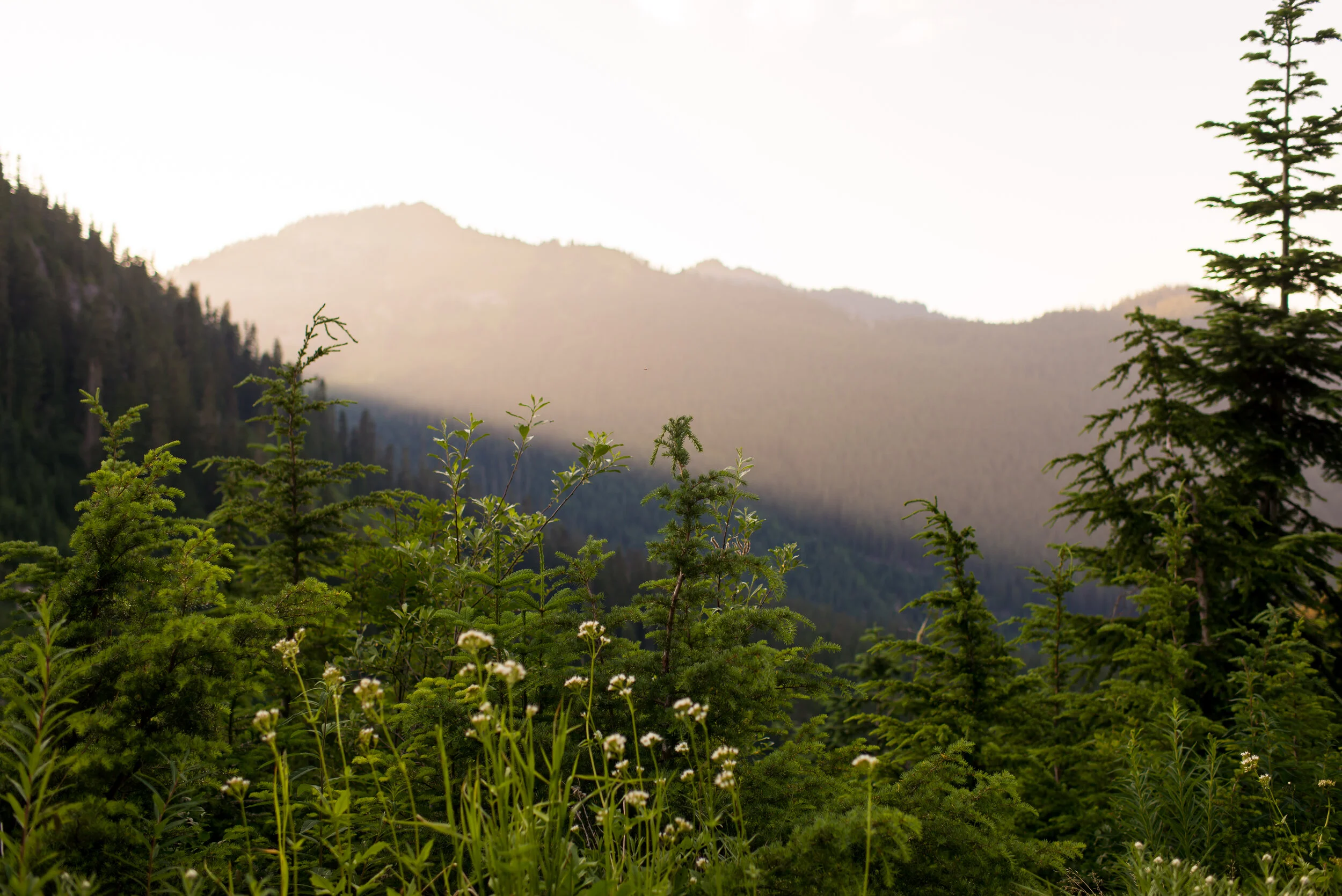Layers in Photography
People, leading line, trees, and peek of a mountain view, also light and shadows layering.
Foreground leading up to trees in middle, light and mountains in background
Layering with rocks in the foreground leading to water to trees/mountains to sky/clouds
PHOTO CHALLENGE | When picking up your camera this week, practice using layers in various ways to structure and compose your images. Consider the framing of your photo using colors, light, and interest in the foreground, middle ground, and background.
Visually speaking, the most striking photographs contain elements that allow your eye to be led through the image and bounce from one object to the next in a way that’s visually compelling: think leading lines, patterns, rule of thirds, etc… With photographs being a two-dimensional form of expression, we need to find ways to introduce the illusion of depth into our images.
Whether you’ve put intention into your composition or you just take a photo because it stands out to you, you’re likely employing a mix of compositional elements, and the more intention you have, the more interesting images you can create.
Layering involves using foreground, subject and background so that all layers of the images work together to help tell a comprehensive story. This can be done in a very obvious way or very subtle, the option is as creative, direct, or abstract as you want it to be. You want a foreground, middle ground, and background with some element of interest (light, color, contrast, etc). We use layers to give the illusion of depth and tell deeper stories, that’s what makes us photographers and visual storytellers, that’s what makes viewers invest in our photography over the thousands of others out there.
There are a variety of reasons you might employ layering in your composition: to balance out the rest of the composition, to create greater interest around your subject, to isolate your subject, to tell a visual story, show scale, etc. When being mindful of the options in front of you, you can really portray a variety of interesting elements in front of, around, or as your subject. Think of the most compelling images you’ve seen–there has likely been a number of techniques layered to pull you in and evoke an emotional response or connection.
As you put together the photo challenge prompts we’ve worked with so far, you can be more intentional than ever with your compositions, understand the elements you have to work with, and visualize and control the outcome.
Note that layers can be very obvious and direct, but they can also be subtle and abstract. This is a great technique to apply creativity to the technical composition of layering.
Knowing how compositional techniques work in an image give the photographer the strongest element of control, creativity, and quality. You’ll notice that the photographers listed below have strong photographic styles
Dylan Goldby | Shooting a wide range of cultural lifestyle imagery, Dylan uses light, layers, texture, and patterns in a subtle and striking way.
Brian Matiash | Worldwide landscape photographer, Brian, uses natural elements like weather, reflections, light, color, or objects to create intense layering in his images. Nearly every image leaves you lingering over all the interest his images have.


